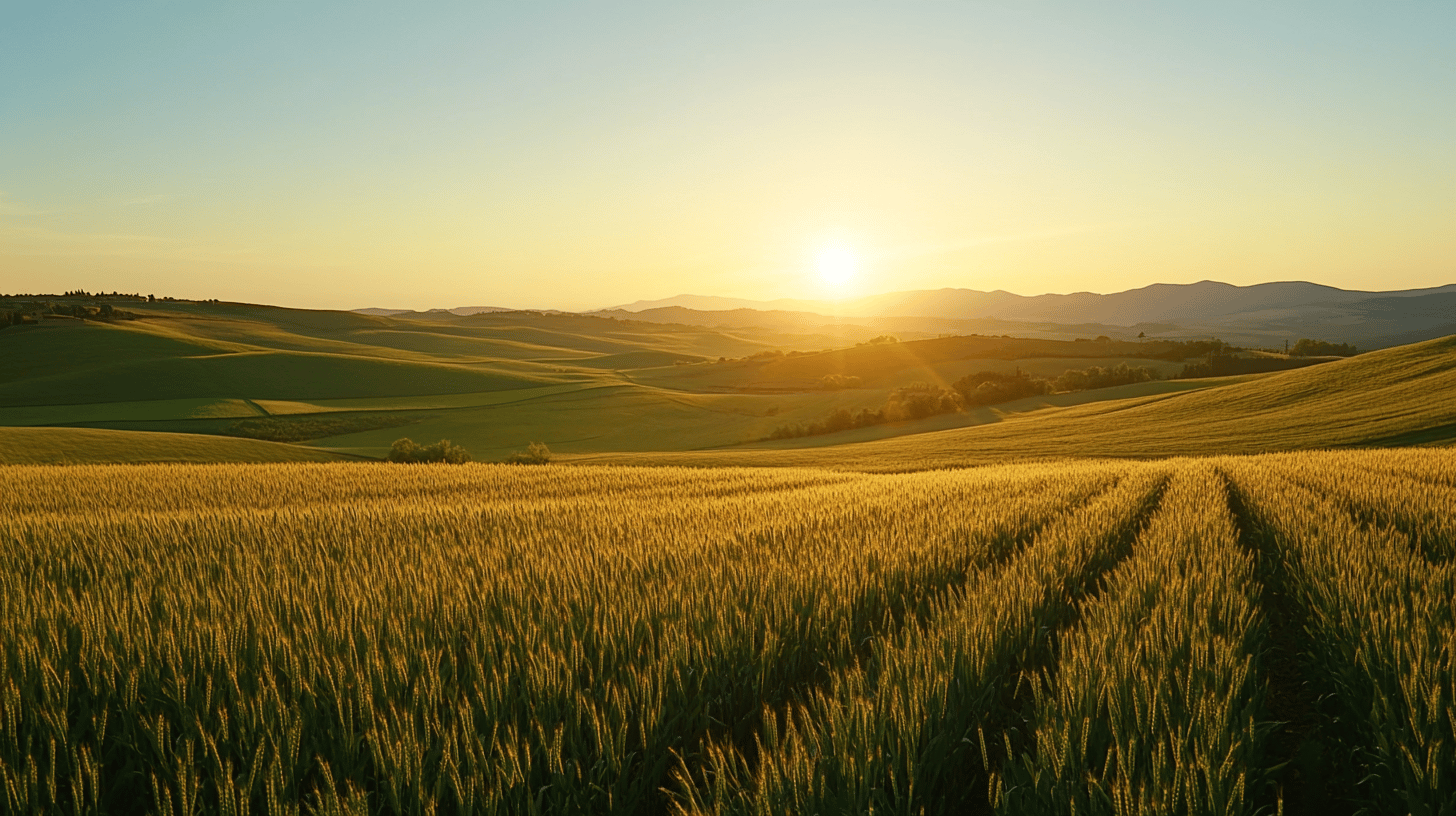Soil conservation: How veganism promotes sustainable agricultural practices
Find out howmeat production contributes to deforestation and land degradation and how veganism supports the protection of natural ecosystems. Start living sustainably!
Livestock production is one of the main drivers of deforestation and land degradation, which has a devastating impact on natural ecosystems. Veganism offers a solution that promotes sustainable agricultural practices and soil conservation. In this article, we look at how switching to a plant-based diet can help protect our planet and create a better future.
Why is soil conservation important?
Soil as the basis for life on Earth
Soil is one of the most precious natural resources that forms the basis for life on our planet. Its quality and health affect not only food production, but also the ability of the landscape to retain water, regulate climate and support biodiversity. Healthy soil acts as a natural filter, purifying water and sequestering carbon, helping to reduce the impacts of climate change. Without healthy soil, it would be impossible to provide enough food for the world's growing population, leading to serious food security problems.
Soil degradation, which includes erosion, loss of organic matter and pollution, has far-reaching consequences. In addition to reducing soil fertility, ecosystem services such as flood protection or support for natural habitats for plants and animals are also disrupted. This process is often irreversible, meaning that once destroyed, soil can only regenerate very slowly, if at all.
How livestock production contributes to land degradation
Livestock production is one of the main factors contributing to soil degradation at a global level. Intensive grazing often leads to overgrazing of vegetation, which causes soil erosion as the roots of plants that hold the soil together are removed. Without vegetation cover, the soil is exposed to wind and rain, accelerating soil erosion and nutrient leaching.
Another problem is deforestation, which is often associated with the expansion of pastures or the cultivation of crops such as soybeans that serve as livestock feed. In the Amazon, for example, vast amounts of rainforest have been deforested for these purposes. This practice not only destroys natural ecosystems, but also contributes to the release of carbon stored in the soil and vegetation, which further exacerbates climate change.
In addition, intensive agriculture linked to the production of animal feed often requires the use of chemical fertilisers and pesticides, which can contaminate the soil and upset its natural balance. These substances can kill micro-organisms that are key to soil health, further reducing soil fertility. As a result, the soil loses its ability to support crop growth, leading to the need to use more and more chemical inputs, making the problem worse.
Livestock production also requires large amounts of water, which can lead to soil drying out in areas where water is already a limited resource. This process, known as desertification, is particularly evident in arid areas where intensive farming and grazing are degrading already fragile ecosystems.
Comparison of the areas of greatest deforestation and its main causes:
Amazonia (South America):
Main causes:
Livestock grazing (70% deforested land).
Cultivation of soya as livestock feed.
Impact:
Loss of biodiversity (threat to species such as jaguars and sloths).
Increase in CO₂ emissions due to tree felling.
Central Africa:
Main Causes:
Logging (illegal and commercial).
Expansion of farmland and grazing land.
Impact:
Destruction of natural habitats for gorillas, elephants and other species.
Land degradation and loss of forest ecosystems.
Southeast Asia:
Main Causes:
Establishment of palm oil plantations.
Logging for export.
Impact:
Endangered species such as orangutans and Sumatran tigers.
Pollution of water sources and soil.
Summary:
Amazonia: the world's largest deforestation, mainly for cattle ranching and soy cultivation.
Central Africa: Deforestation for logging and agriculture.
Southeast Asia: Deforestation for palm oil plantations and logging.
Practical tips for soil conservation through veganism
Tip 1: Switching to a plant-based diet
Switching to a plant-based diet is one of the most effective ways to reduce your impact on the land and the environment. You don't have to change your diet overnight - start gradually. For example, set aside one or two days a week when you eat only plant-based foods. Gradually you can try new recipes and discover tasty alternatives to meat and dairy products.
Plant-based alternatives such as legumes (lentils, chickpeas, beans), whole grains (quinoa, oats, brown rice) and healthy fats from nuts and seeds provide all the nutrients your body needs. Plus, these foods are less land, water and energy intensive than animal products. Experiment with plant-based milks, cheeses or meat substitutes, which are readily available and delicious today.
Tip 2: Support local and organic farmers
Supporting local farmers and organic farming is another step towards soil conservation. Buying seasonal and local produce not only reduces the ecological footprint associated with transporting food over long distances, but also promotes sustainable farming practices. Local farmers often use conservation farming methods that protect the soil from erosion and degradation.
Visit farmers' markets where you can buy fresh fruit, vegetables and other produce directly from the growers. Also consider joining community gardens where you can grow part of your own food while learning more about sustainable growing. Supporting organic farmers who don't use chemical fertilizers and pesticides helps protect the soil and improve its quality.
Tip 3: Minimise food waste
Food waste has both economic and environmental consequences, including unnecessary depletion of land. Learn how to store food properly to extend its shelf life. For example, store vegetables and fruit in the fridge or in a dry, dark place according to their specific needs.
Use leftovers creatively - for example, overripe fruit can be made into smoothies or jams, while vegetable scraps can be used for stock. Another option is fermentation, which not only extends the shelf life of food but also increases its nutritional value. Drying and freezing are other effective ways to preserve food for longer.
Minimizing food waste also involves menu planning and shopping. Make a list before you shop and only buy what you really need. This will not only save you money, but also help protect the earth by reducing the demand for excessive food production.
How does veganism support soil and ecosystem conservation?

Promoting regenerative agriculture
Veganism also naturally supports regenerative farming methods that focus on restoring the soil and ecosystems. Regenerative agriculture includes techniques that improve soil health, increase soil organic matter and promote biodiversity.
Examples include composting, which returns important nutrients to the soil, or crop rotation, which helps prevent soil depletion and reduces the risk of pests and diseases.
Another example is agroecology, which combines traditional farming practices with modern scientific knowledge to create sustainable and environmentally friendly systems.
Agroecological farms often use mixed crops, natural fertilizers and integrated pest management, which minimizes negative impacts on the soil and the surrounding environment. Permaculture, another regenerative approach, focuses on designing farming systems that mimic natural ecosystems and promote long-term sustainability.
Sustainable agricultural practices
One of the main benefits of veganism is its ability to reduce pressure on natural resources through more efficient use of land, water and energy. The production of plant-based food for direct human consumption is much less demanding than livestock farming, which requires large areas for grazing and growing fodder.
For example, growing legumes, cereals or vegetables provides more calories and protein per unit of land than meat production. This more efficient approach allows larger areas of natural ecosystems to be preserved that would otherwise be converted to farmland.

In addition, a plant-based diet reduces the need for intensive use of chemical fertilisers and pesticides, which often contaminate soil and water resources. Instead, sustainable crop-based agriculture emphasises natural methods such as the use of organic fertilisers, crop rotation and soil cover protection. These practices not only protect the soil from erosion but also improve its ability to retain water and nutrients, which is key to long-term sustainability.
These methods not only protect the soil from degradation, but also contribute to restoring ecosystems that have been damaged by intensive agriculture. For example, planting trees and shrubs on farms helps to improve soil quality, retain water and provide shelter for wildlife. In this way, veganism encourages a transition to agriculture that is both environmentally friendly and capable of providing enough food for a growing population.



